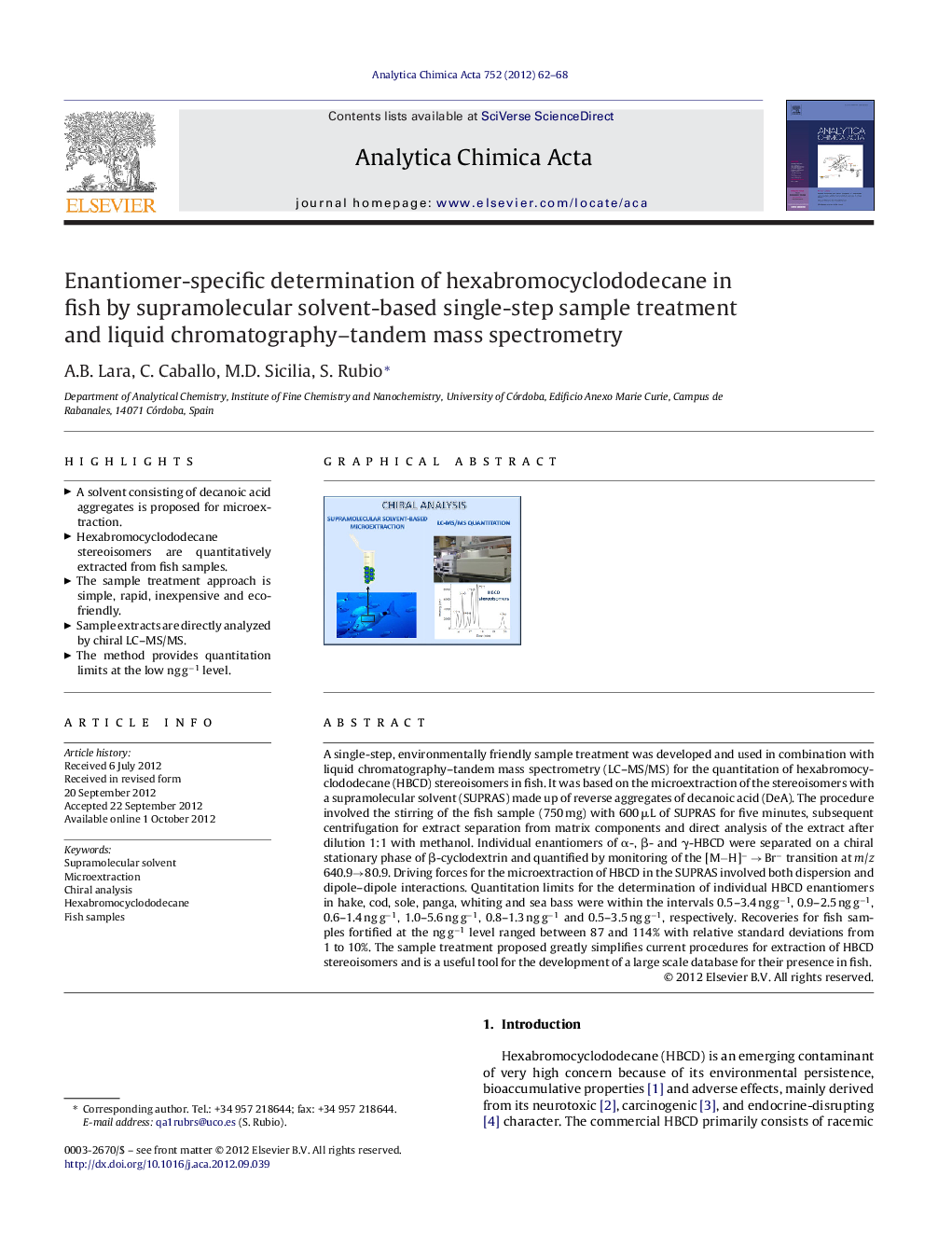| Article ID | Journal | Published Year | Pages | File Type |
|---|---|---|---|---|
| 1165604 | Analytica Chimica Acta | 2012 | 7 Pages |
A single-step, environmentally friendly sample treatment was developed and used in combination with liquid chromatography–tandem mass spectrometry (LC–MS/MS) for the quantitation of hexabromocyclododecane (HBCD) stereoisomers in fish. It was based on the microextraction of the stereoisomers with a supramolecular solvent (SUPRAS) made up of reverse aggregates of decanoic acid (DeA). The procedure involved the stirring of the fish sample (750 mg) with 600 μL of SUPRAS for five minutes, subsequent centrifugation for extract separation from matrix components and direct analysis of the extract after dilution 1:1 with methanol. Individual enantiomers of α-, β- and γ-HBCD were separated on a chiral stationary phase of β-cyclodextrin and quantified by monitoring of the [M−H]− → Br− transition at m/z 640.9→80.9. Driving forces for the microextraction of HBCD in the SUPRAS involved both dispersion and dipole–dipole interactions. Quantitation limits for the determination of individual HBCD enantiomers in hake, cod, sole, panga, whiting and sea bass were within the intervals 0.5–3.4 ng g−1, 0.9–2.5 ng g−1, 0.6–1.4 ng g−1, 1.0–5.6 ng g−1, 0.8–1.3 ng g−1 and 0.5–3.5 ng g−1, respectively. Recoveries for fish samples fortified at the ng g−1 level ranged between 87 and 114% with relative standard deviations from 1 to 10%. The sample treatment proposed greatly simplifies current procedures for extraction of HBCD stereoisomers and is a useful tool for the development of a large scale database for their presence in fish.
Graphical abstractFigure optionsDownload full-size imageDownload as PowerPoint slideHighlights► A solvent consisting of decanoic acid aggregates is proposed for microextraction. ► Hexabromocyclododecane stereoisomers are quantitatively extracted from fish samples. ► The sample treatment approach is simple, rapid, inexpensive and eco-friendly. ► Sample extracts are directly analyzed by chiral LC–MS/MS. ► The method provides quantitation limits at the low ng g−1 level.
